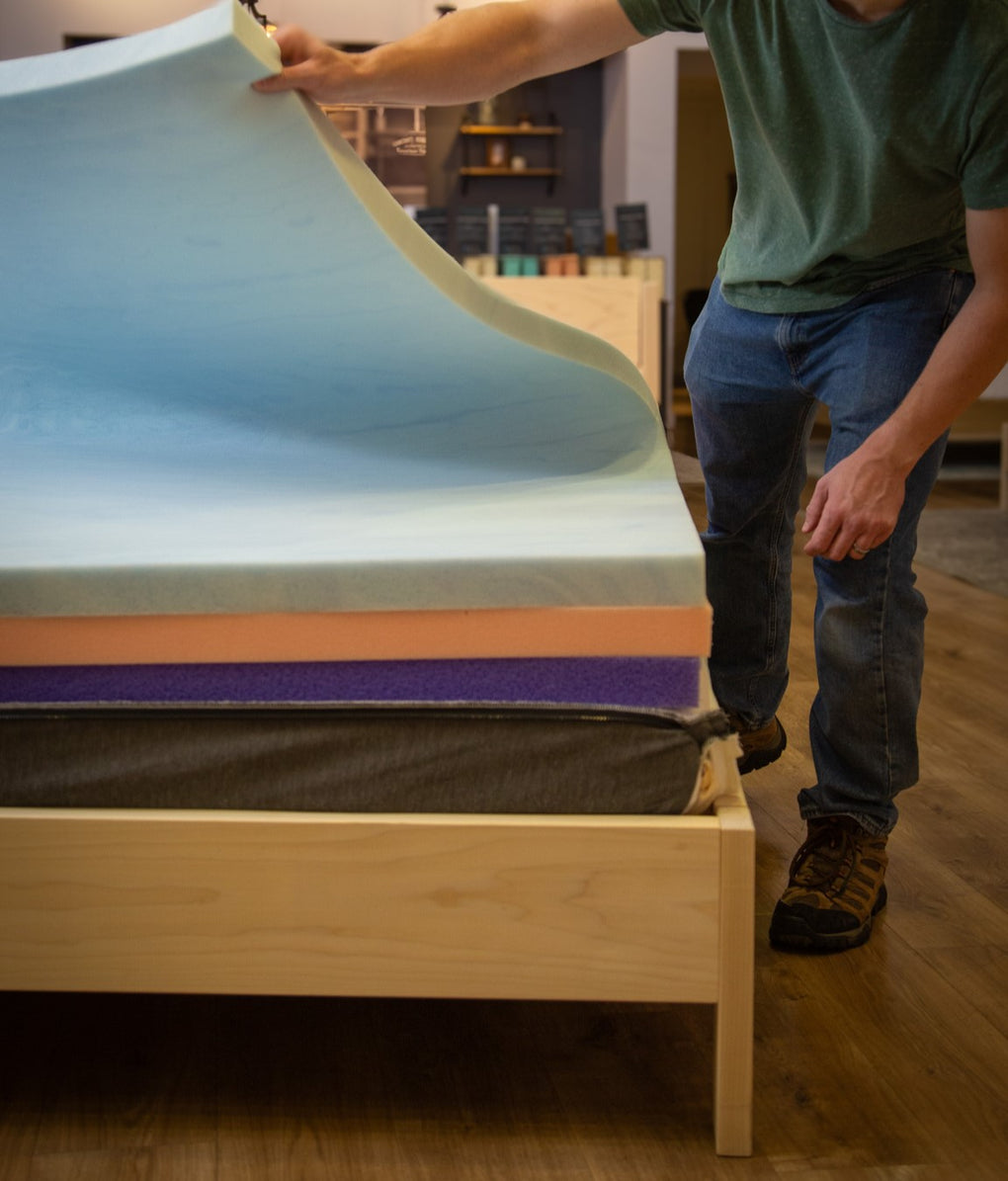We are not using this page
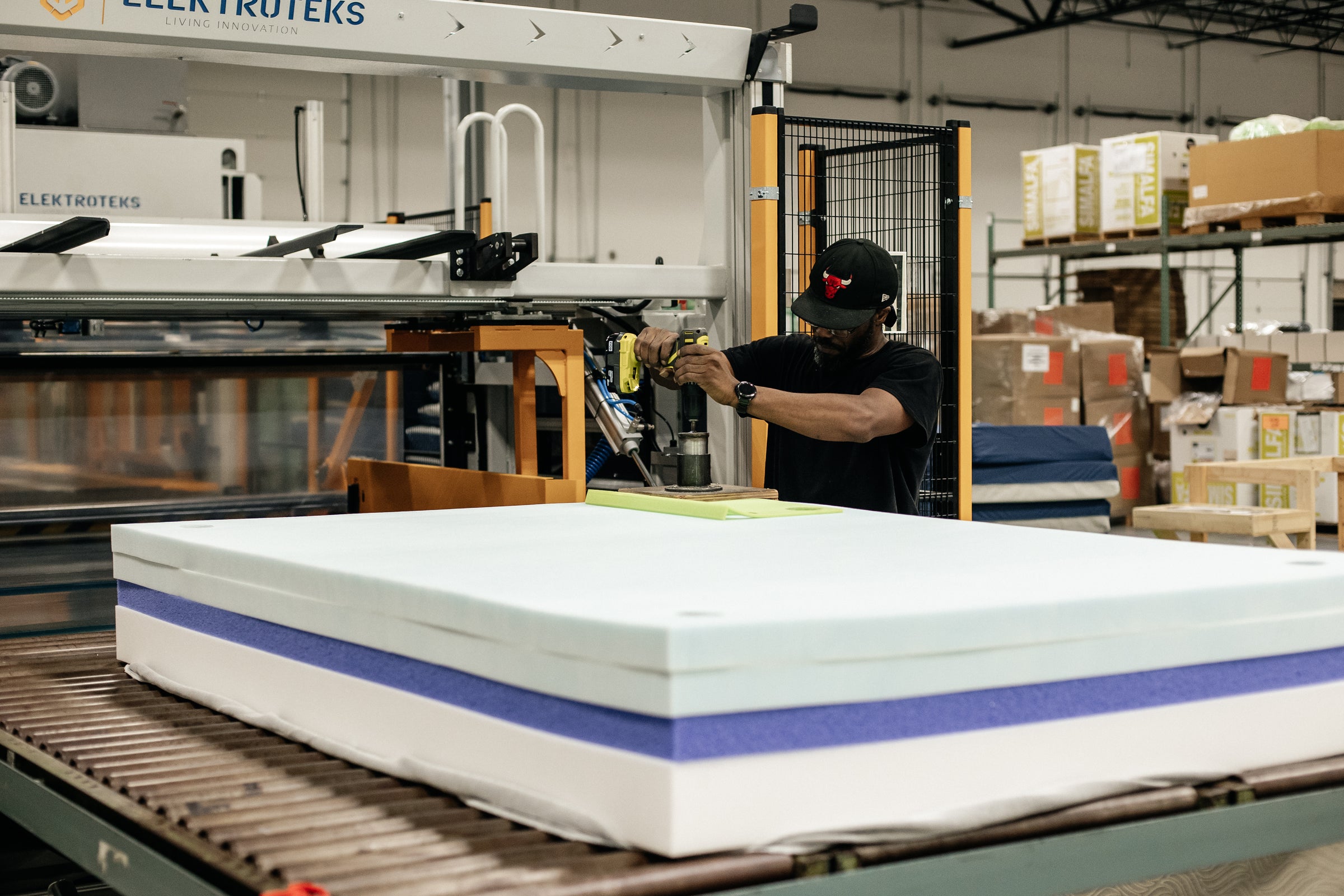
Need to know...
What's in a Foam?
Learn about the foam that makes your mattress.
Get the Specs
Whether you buy from us -- or someone else -- we believe everyone should be able to know exactly what they're getting into when they invest in a new bed. So here's a breakdown on three of the most important factors to consider when you're looking at mattress quality: Firmness, Density, and Resiliency.
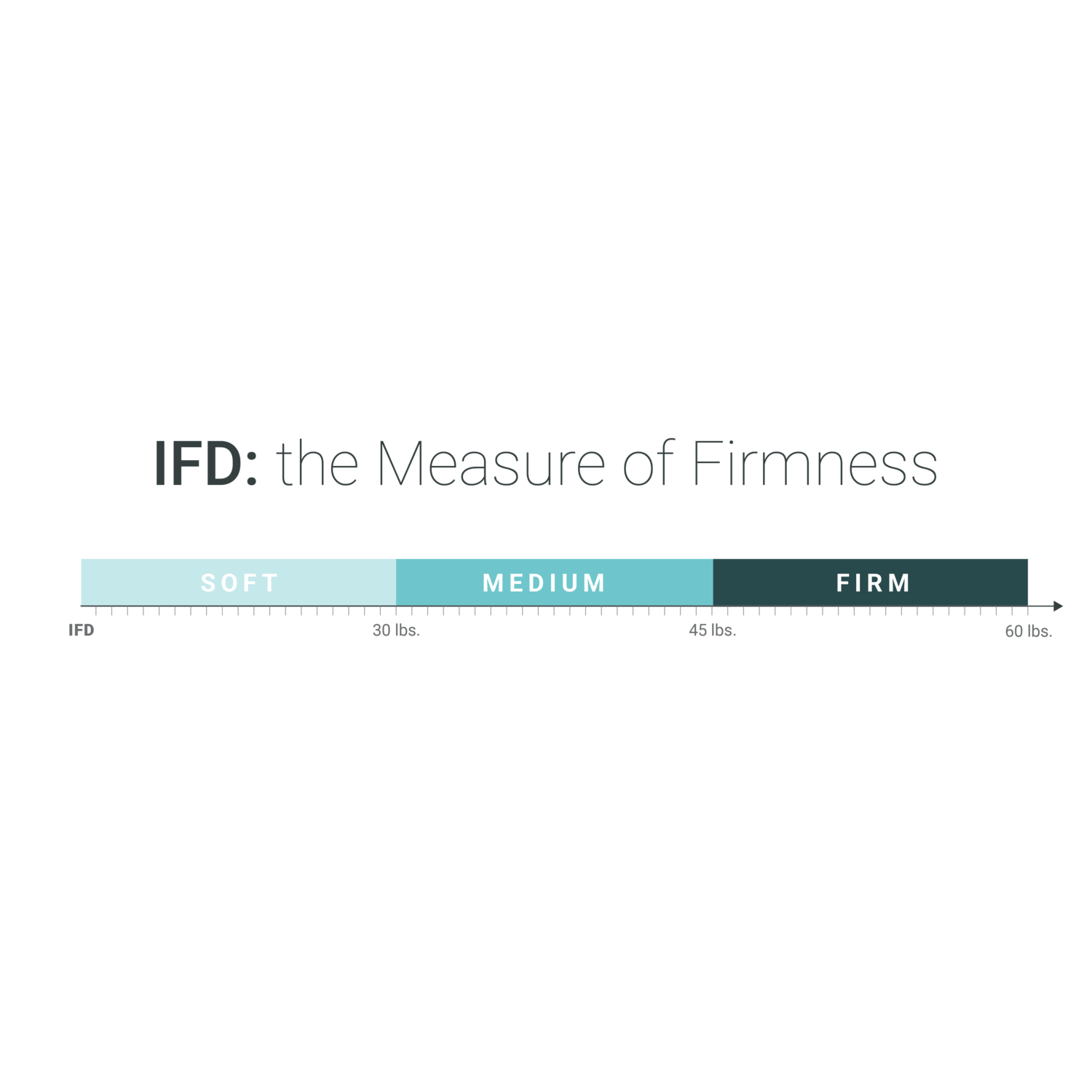
Firmness
This shouldn't come as a surprise, but firmness varies from foam to foam. In the show room, you're usuallytold that one of three options constitutes the "soft" mattress offerings, while two others make up the store's "firm" selection. But what does that mean objectively?
To get to that answer, you need to know how firmness is measured. In the case of polyurethane foams this is determined by a physical property called the Indentation Force Deflection, or IFD. You may also hear it called the Indentation Load Deflection, or ILD. These are the same thing. While this can sound quite technical, all it refers to is the number of pounds of weight (or force) required to condense a 4-inch thick sample of the foam to 75% of its original height. Translation? The higher the IFD, the firmer the foam.
See it in action! Here's the machine we use to test a foam's IFD. It may not be fast, but we think it's pretty im-PRESS-ive. Anyone? Anyone? Ok.
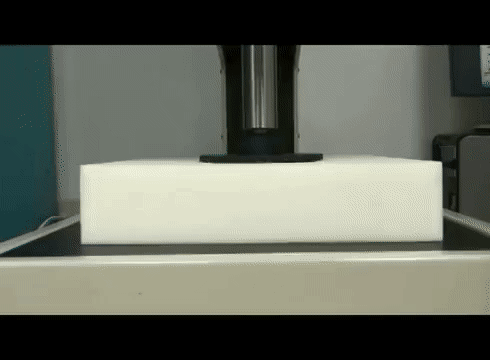
One important thing that we often note with foam is that, while IFD is the scientific measure of firmness, the level of resiliency or even the feel of the foam type can also sometimes play into an individual’s perception of firmness or softness. When it comes to feel, it’s not always apples to apples and, for this reason, we always encourage our customers to try their options prior to purchasing whenever possible. That is the best way to dial things in and people are sometimes surprised by what they like best. Below is a table showing the specifications (IFD included!) of each of our comfort layers.
| Foam Type | Density | IFD |
|---|---|---|
| Copper-Infused Memory Foam | 3 lbs/ft3 | 8 |
| Slow Release Foam | 2.5 lbs/ft3 | 16 |
| Soft Responsive Foam | 2.5 lbs/ft3 | 11 |
| Firm Responsive Foam | 2.9 lbs/ft3 | 15 |
| Latex-Like, High Resiliency Foam | 2.6 lbs/ft3 | 18 |
FIRMNESS ≠ DENSITY
Before moving on, we’d just like to clarify a common misconception. As noted in the table above above, firmness is not the same thing as density when it comes to foam. Two samples can have equal densities and be engineered to have different IFDs. Density is an entirely separate property with its own importance, which we’ll dive into in the next section.
Durability
The measure of durability in foam revolves around one concept: density. The denser the foam, the more material went into making it, which in turn translates to a longer lasting product. Foam density is measured in pounds per cubic foot, which is as straightforward as it sounds. The more weight in a given cubic foot, the higher the quality. More material, longer performance
DENSITY = LBS/FT³
Often times, mattress manufacturers will use quality, high-density foam in the top layer or two of a mattress (the parts you feel), then opt to use low-density, cheap foam in the base-layer of the bed in order to cut costs. Ever seen a foam mattress with a big, body-shaped indent in it? A cheap, low-density base is surely to blame. The foam simply isn’t made to last and will collapse with very little use. Those $200 king-sized mattresses on Amazon? Buyers beware.
To give you an idea of just how much the density of the base-layer or core of a mattress affects its longevity, let’s take a look at some numbers:
1-1.5 lbs/ft³
(cheap)
1.6-1.8 lbs/ft³
(decent)
2.8 lbs/ft³
(best)
Low-density foam in the base layer is a prevailing problem in the mattress industry and, as the numbers indicate, it will likely leave many people unsatisfied with the performance of their mattress over time.
On the opposite end of the spectrum, there has similarly proven to be negative performance associated with using foam that is too dense in the top layers of a mattress. While this material will surely last, too much density can result in overheating as a result of what has become known as the “oven effect.” Essentially, past a certain point, the level of density may create a totally unbreathable layer, which causes a sleeper’s body heat to be trapped all around them while they sleep.
Fortunately, there is a sweet spot: a perfect level of density that is durable enough to last for 10+ years, but won’t create any heat issues (especially when paired with some sort of cooling technology, which we’ll outline in the next section) or any other performance related problems. That sweet spot lies in the 2.5-3.9 lbs/ft³ range, which has become a benchmark and industry standard for memory foams and top layers. Take a look at the following chart, which was compiled from a study of over 7,100 memory foam bed owner experiences, conducted by Sleep Like the Dead, an unbiased sleep-product review source:
Memory Foam Density Comparison
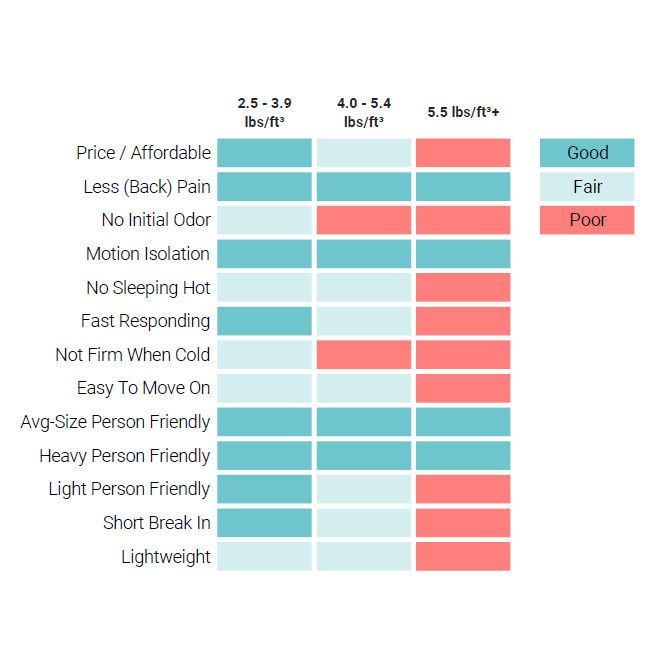
As you can see, performance is optimized in the 2.5-3.9 lbs/ft³ range, as well as price. Win, win. All of the foam types we utilize for our top two comfort layers are intentionally selected from within this density range.
In conclusion, density is the true measure of foam durability and quality; a science in and of itself. Many manufacturers intentionally hide this information or flat out refuse to give it; as such, we encourage anyone in need of a mattress to ask the right questions and know the numbers before buying. In an effort to offer true solutions to our customers, we are fully transparent in our manufacturing. Let us know if you have any questions regarding any of the materials we utilize in our customized mattress constructions and we’ll gladly give you answers.
Resiliency
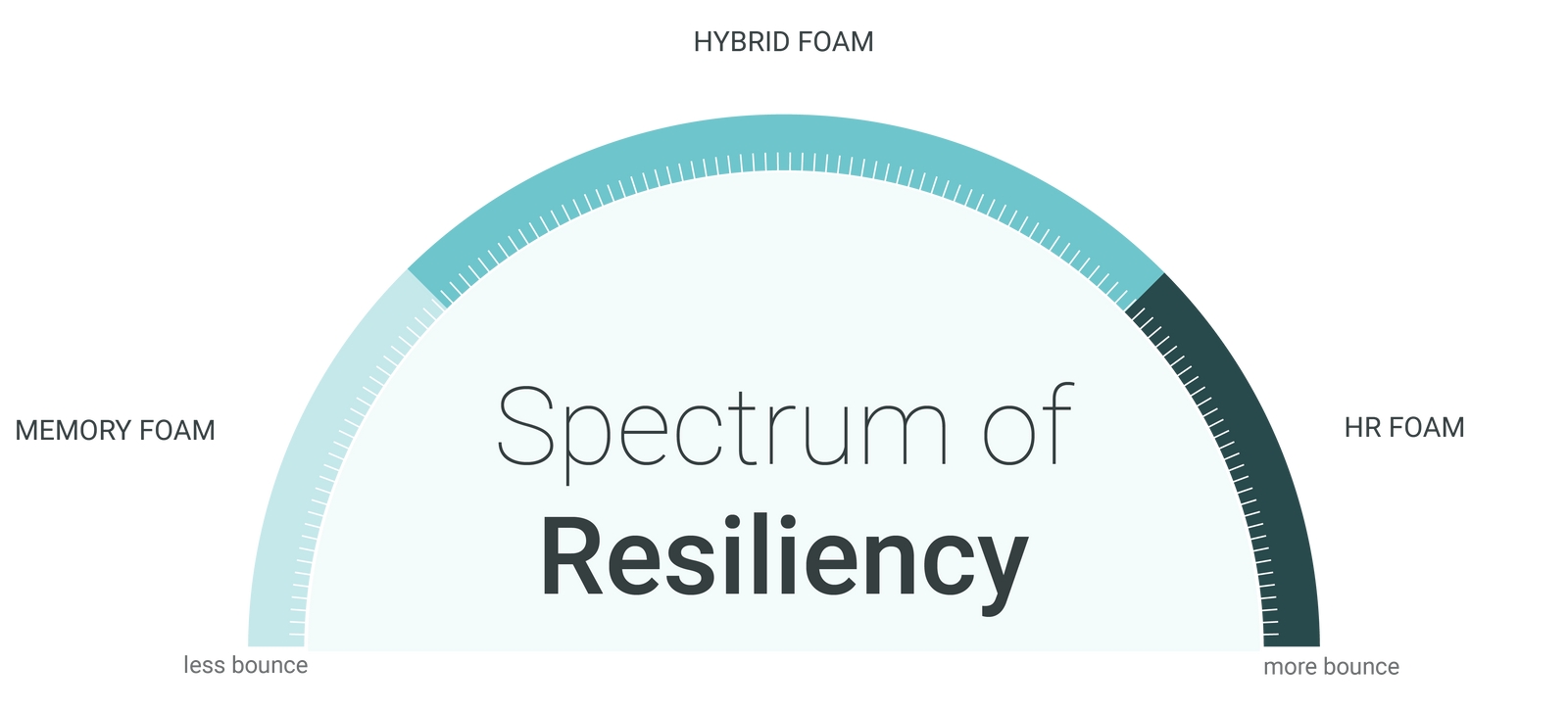
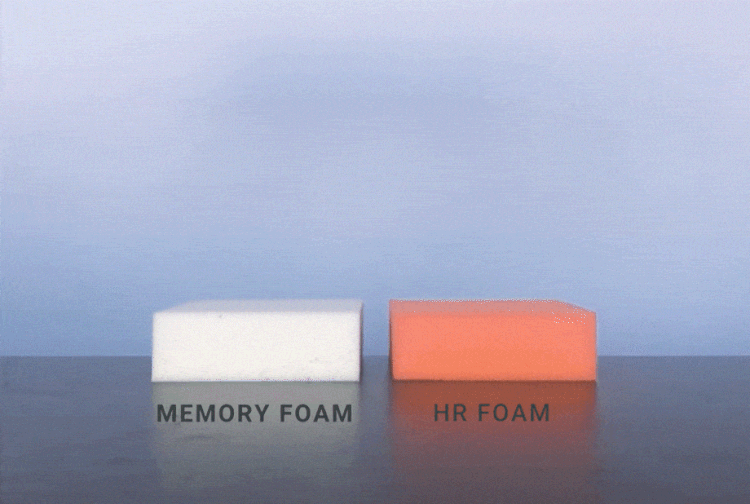
What is resiliency, you ask? It is simply how quickly the material recovers or springs back into shape, its elasticity. In the world of comfort, it can be summarized as bounce, or lack thereof. It's measured by dropping a metal ball down a glass tube from a prescribed distance and measuring how high it rebounds. This is -- unsurprisingly -- called the ball rebound test. The type of foam used will greatly effect how it performs on this test. For instance, if you were to drop it on most latex options or H.R. foams you would see a pretty significant rebound. But memory foam? Not so much.
Great, but what does this mean for your sleep? Here's a brief video we did discussing resiliency and how it might inform your mattress decision.


